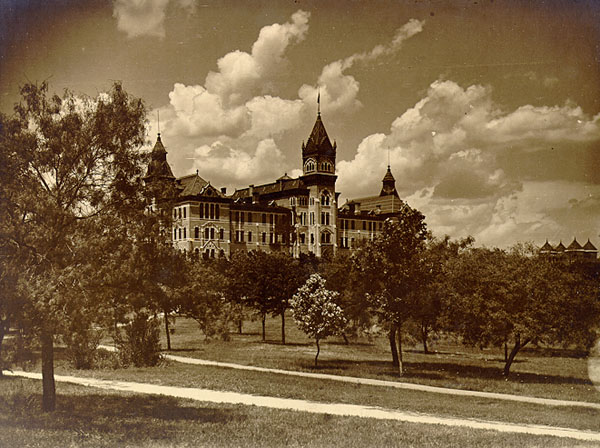|
Zsuzsanna Ozsváth
Zsuzsanna Ozsváth is a Hungarian author and translator of Jewish descent. After moving to the United States, she documented her experience as a holocaust survivor and translated several works of poetry and literature, mainly those of Hungarian and German authors. In 2003 she was named the Leah and Paul Lewis Chair of Holocaust Studies at the University of Texas, Dallas. Education A classical pianist, Ozsváth was awarded a concert diploma from the State Academy of Music at Hamburg in 1961. She went on to earn her Ph.D. in German Language and Literature from The University of Texas at Austin in 1968. Career Ozsváth joined the University of Texas at Dallas as a lecturer in 1976, initially teaching 19th- and 20th-century literature and history classes. Shortly thereafter, she began teaching courses about the Holocaust. She spearheaded the founding of the Holocaust Studies Program at the University of Texas at Dallas in 1986. In 2003, she was appointed to the Leah and Paul ... [...More Info...] [...Related Items...] OR: [Wikipedia] [Google] [Baidu] |
Békéscsaba
Békéscsaba (; ; see also #Name, other alternative names) is a city with county rights in southeast Hungary, the capital of Békés County. Geography Békéscsaba is located in the Great Hungarian Plain, southeast from Budapest. Highway 44, 47, Békéscsaba beltway (around the city) and Budapest-Szolnok-Békéscsaba-Lőkösháza high speed () railway line also cross the city. Highway 44 is a four-lane Limited-access road, expressway between Békéscsaba and Gyula, Hungary, Gyula. According to the 2011 census, the city has a total area of . Name ''Csaba'' is a popular Hungarian given name for boys of Turkic languages, Turkic origin, while the prefix ''Békés county, Békés'' refers to the county named Békés, which means peaceful in Hungarian language, Hungarian. Other names derived from the Hungarian one include , , and . History The area has been inhabited since the ancient times. In the Iron Age the area had been conquered by the Scythians, by the Celts, then by the ... [...More Info...] [...Related Items...] OR: [Wikipedia] [Google] [Baidu] |
Hungary
Hungary is a landlocked country in Central Europe. Spanning much of the Pannonian Basin, Carpathian Basin, it is bordered by Slovakia to the north, Ukraine to the northeast, Romania to the east and southeast, Serbia to the south, Croatia and Slovenia to the southwest, and Austria to the west. Hungary lies within the drainage basin of the Danube, Danube River and is dominated by great lowland plains. It has a population of 9.6 million, consisting mostly of ethnic Hungarians, Hungarians (Magyars) and a significant Romani people in Hungary, Romani minority. Hungarian language, Hungarian is the Languages of Hungary, official language, and among Languages of Europe, the few in Europe outside the Indo-European languages, Indo-European family. Budapest is the country's capital and List of cities and towns of Hungary, largest city, and the dominant cultural and economic centre. Prior to the foundation of the Hungarian state, various peoples settled in the territory of present-day Hun ... [...More Info...] [...Related Items...] OR: [Wikipedia] [Google] [Baidu] |
Hochschule Für Musik Und Theater Hamburg
The Hochschule für Musik und Theater Hamburg is one of the larger College or university school of music, universities of music in Germany. It was founded in 1950 as ''Staatliche Hochschule für Musik'' (Public college of music) on the base of the former private acting school of Annemarie Marks-Rocke and Eduard Marks. Courses cover various musical genres, including church music, jazz, pop, composition, conducting, instrumental music as well as voice. The theatre academy offers courses in drama and opera and directing in these fields. A third academy offers scientific and educational degrees and qualifications (musicology, music education and therapy). The university is located in the prestigious Budge-Palais in Hamburg Rotherbaum at the Außenalster, close to the city centre. Directors *Philipp Jarnach (1950–59) *Wilhelm Maler (1959–69) *Hajo Hinrichs (1969–78) *Hermann Rauhe (1978–2004) *Michael von Troschke (April to October 2004) *Elmar Lampson (since October 2004) ... [...More Info...] [...Related Items...] OR: [Wikipedia] [Google] [Baidu] |
The University Of Texas At Austin
The University of Texas at Austin (UT Austin, UT, or Texas) is a public research university in Austin, Texas, United States. Founded in 1883, it is the flagship institution of the University of Texas System. With 53,082 students as of fall 2023, it is also the largest institution in the system. The university is a major center for academic research, with research expenditures totaling $1.06 billion for the 2023 fiscal year. It joined the Association of American Universities in 1929. The university houses seven museums and seventeen libraries, including the Lyndon B. Johnson Presidential Library and the Blanton Museum of Art, and operates various auxiliary research facilities, such as the J. J. Pickle Research Campus and McDonald Observatory. UT Austin's athletics constitute the Texas Longhorns. The Longhorns have won four NCAA Division I National Football Championships, six NCAA Division I National Baseball Championships, sixteen NCAA Division I National Men's Swimming ... [...More Info...] [...Related Items...] OR: [Wikipedia] [Google] [Baidu] |
Holocaust Survivor Memoirs
The Holocaust has been a prominent subject of art and literature throughout the second half of the twentieth century. There is a wide range of ways–including dance, film, literature, music, and television–in which the Holocaust has been represented in the arts and popular culture. Dance The subject of the Holocaust has been depicted within modern dance. In 1961, Anna Sokolow, a Jewish-American choreographer, created her piece ''Dreams'', as an attempt to deal with her night terrors. Eventually, it became an aide-mémoire to the horrors of the Holocaust. In 1994, Israeli choreographer Rami Be'er tried to illustrate the feeling of being trapped in ''Aide Memoire'' (Hebrew title: ''Zichron Dvarim''). The dancers move ecstatically, trapped in their turmoil, spinning while swinging their arms and legs, and banging on the wall; some are crucified, unable to move freely on the stage. This piece was performed by the Kibbutz Contemporary Dance Company. In 2016, Tatiana Navka caused co ... [...More Info...] [...Related Items...] OR: [Wikipedia] [Google] [Baidu] |
